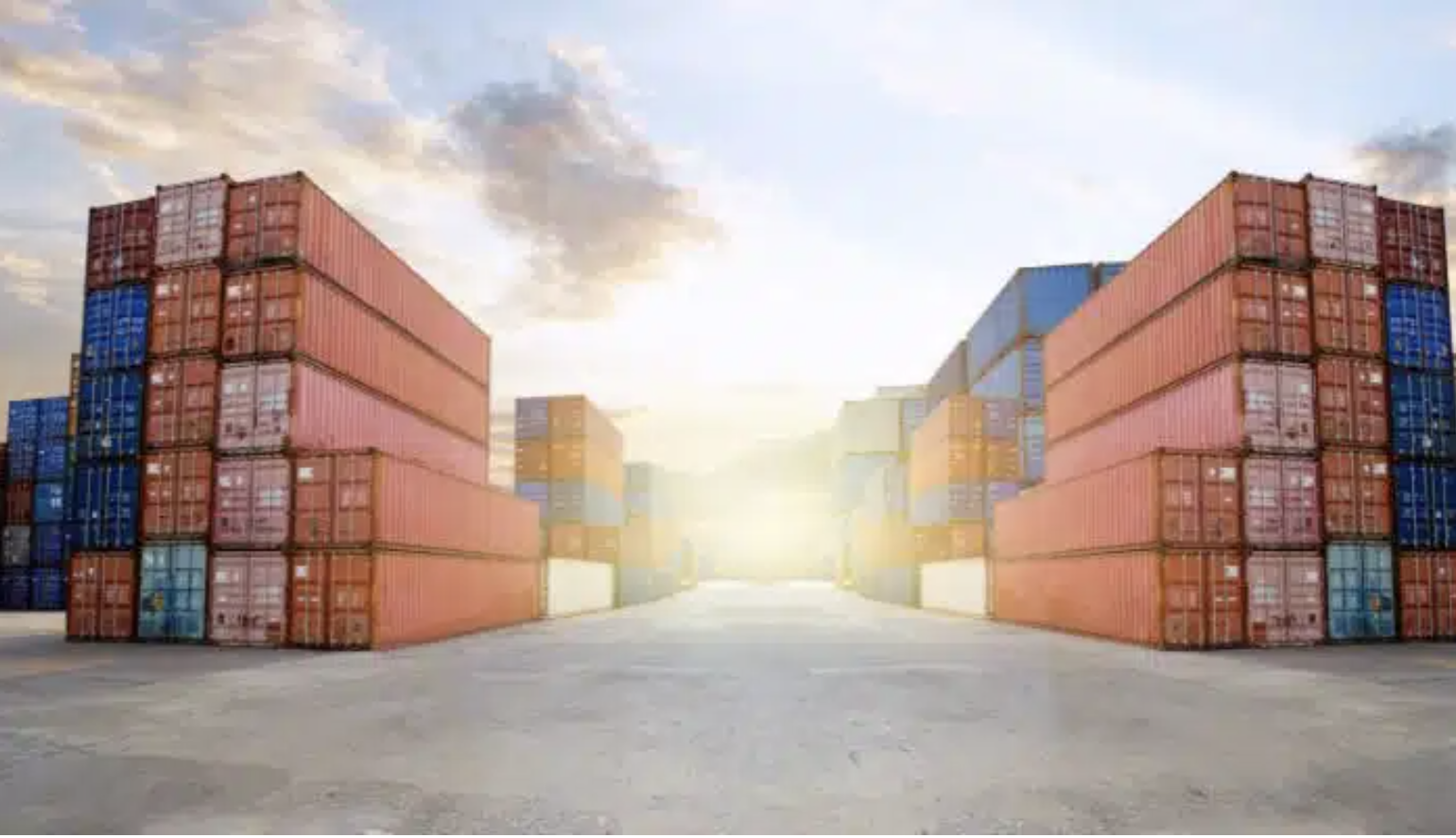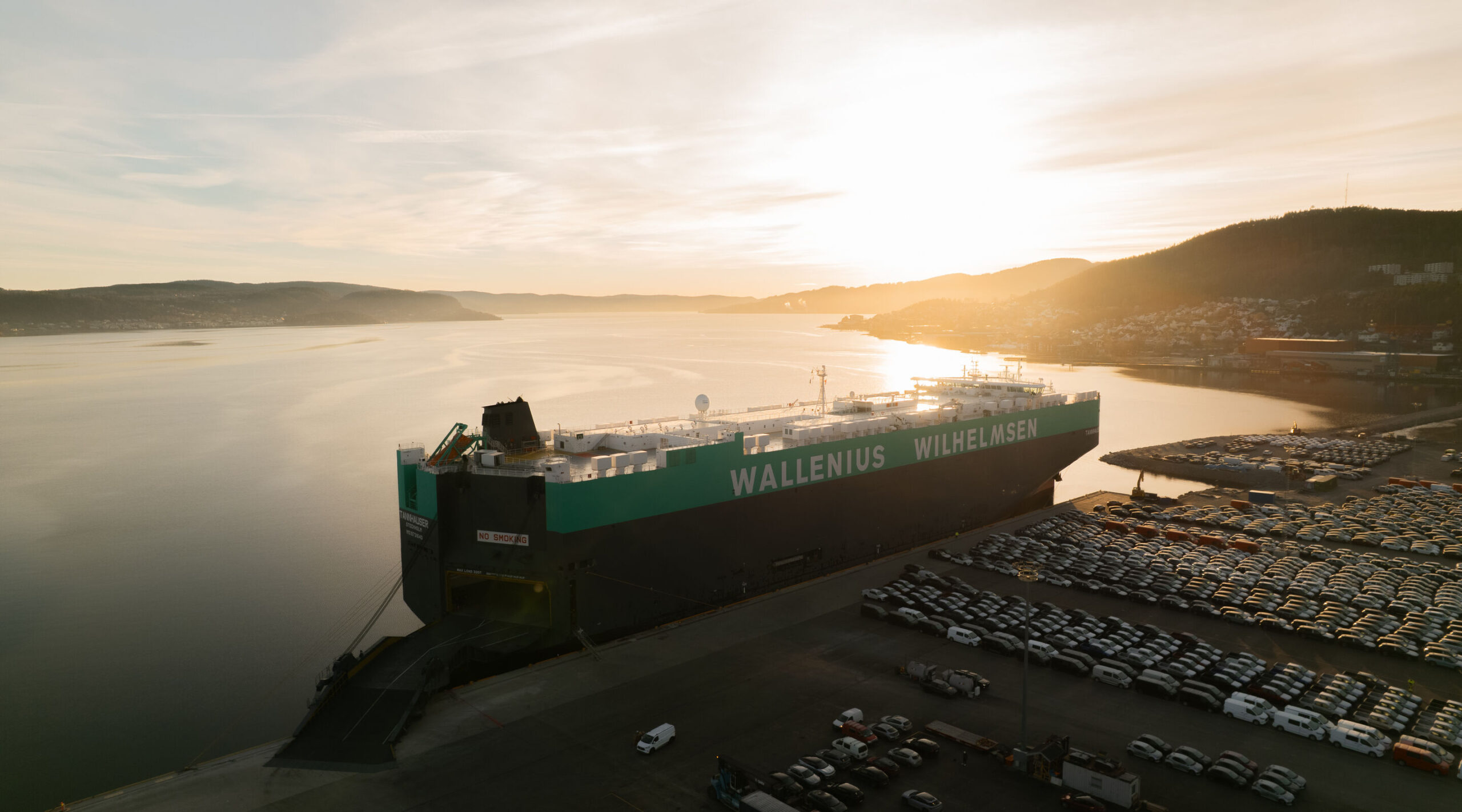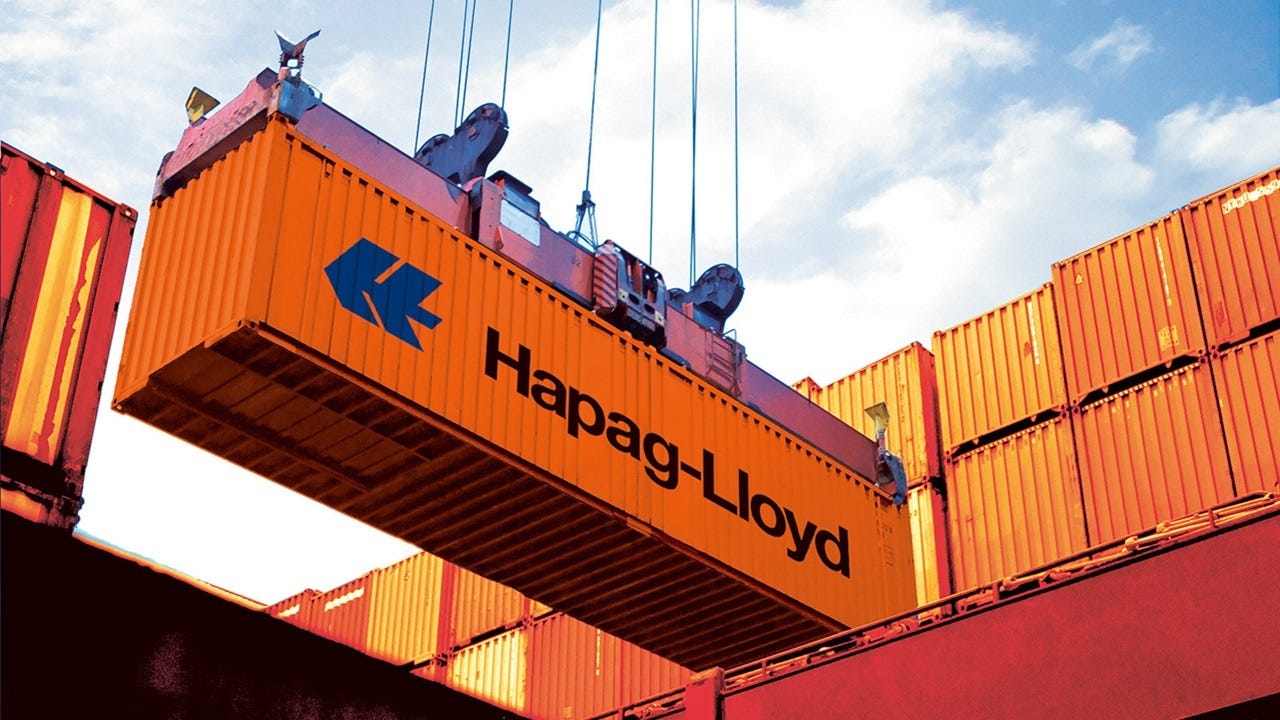HOW IS MANAGEMENT OF EMPTY SHIPPING CONTAINERS CARRIED OUT?
A common challenge faced by container Carriers relates to the handling and movement of empty containers.
How is Management of Empty Shipping Containers Carried Out?
A common challenge faced by container Carriers relates to the handling and movement of empty containers.
When thinking of the container shipping trade, the image that conjures up in the minds of most people is that of cargo being stuffed in a container, which is then hauled to the origin port for loading on board the scheduled vessel and shipped to the destination port, whence it is delivered to the importer/ consignee’s premises. And the process is repeated ad infinitum thereafter.

What most people overlook or are unaware of is what happens to the container once it has been destuffed at the destination and is empty.
After destuffing the shipping container, the importer/ consignee is obligated to return it to the Carrier’s designated empty container return depot, whereafter the container once again becomes the shipping line’s responsibility.
What a layman might assume is that the container is once again stuffed with some other exporter’s cargo and shipped to a new destination.
In reality, however, the process is not as simplistic and is contingent on a number of factors.
In this article, we will understand how shipping lines manage empty containers to ensure optimal returns, minimise idle time, and maximise asset turnover.
Concept of Empty container management
Contrary to common belief, the journey of a container across multiple consignments is not a linear or straightforward one.
For a carrier, even though its vessels might move in a fixed rotation on the scheduled service, its container allocation and movement depend on factors such as the availability and nature of the commodity, the pickup location, the exporters and importers involved, and the destination.
It rarely happens that trade between two countries or regions is balanced, with an equal volume of bilateral exports and imports.
So, it cannot be assumed that when a loaded container is sent to a destination country, there will be export cargo readily available in the destination country as well to have the container back in the transport chain immediately.
Generally speaking, on most shipping trade routes, there does exist at least some imbalance between exports and imports for each country (the country-level imbalance is much higher in cases where the counterpart is a manufacturing powerhouse such as China, whose rapid economic growth has been propelled by exports).
Global markets, and consequently cargo flows, have over the years evolved such that certain countries have developed massive manufacturing bases while other/ developed countries are major consumption centres.
What this implies is that on most major trade lanes, such as Asia-Europe or Asia-North America, on the Asia outbound leg of the journey, there will be large volumes of manufactured goods to be transported to Europe or North America.
Still, upon arriving at the destination, there will not be volumes adequate enough to fill all the empty containers.
This is because American and European exports generally consist of agricultural commodities or speciality food items and certain types of machinery, whose volumes are relatively lower. This gives rise to a situation where certain countries are export-reliant (such as China or South Korea) while other countries (such as the USA) are import-dominant.
In this scenario, the carrier is left with more containers at the destination than are justified by the cargo available, wherefore some containers will inevitably be empty.
Another scenario is during the peak season, during which time exports are significantly higher than the annual average, resulting in a glut of empty containers at the destination/ consuming regions, while origins will face an equipment shortage until the empty containers are repositioned back.
It is these empty containers that Carriers have to separately plan for to ensure that their idle time is reduced and that they are swiftly shifted to locations where they are needed.
Empty container management thus assumes importance for carriers to ensure the smooth functioning of business, capitalise on sales opportunities and optimise asset utilisation.
Issues and challenges that arise due to empty containers
In the normal course of business, it is inevitable that carriers will have some surplus empty containers at most locations they serve. However, in cases where the export-import imbalance is high, the proportion of empty containers can be excessive.
In this situation, carriers will face the below issues:
Lost revenues and sales opportunities: Since the carrier’s containers are stuck at import-dominant locations while the carrier has orders for transporting cargo in other countries, carriers run the risk of not having sufficient equipment where it is needed (to transport cargo and cater to existing demand). This obviously leads to sales opportunities being missed out and consequent loss of revenues.
Slower asset turnover: Since the carrier first has to ensure that the empty containers are made available where there is cargo, it needs to ensure that the empty container is transported back to the origin before it can be made available to exporters for stuffing.
The process of sending the empty containers back to manufacturing regions means that the container isn’t profitably utilised on the return leg, besides also adding to the idle time. These factors adversely impact the asset turnover ratio, whereby the container is used a lesser number of times than can be reasonably expected.
Additional costs: Moving the empty container back to the exporting region means that the carrier is not carrying any cargo, so the shipping company is compelled to bear transport costs for the container movement (as opposed to being able to charge them to a shipper, had it been carrying cargo).
Measures that can be taken by Carriers to minimise the incidence of empty containers and the costs thereof
Carriers typically resort to certain common measures to either minimise the number of empty containers or recover/ reduce associated costs.
These measures include:
Empty Container Repositioning surcharge or Container Imbalance surcharge: The carrier could calculate its aggregate empty container repositioning costs for each trade lane and then pass on the average per-container cost to shippers in the form of an Empty Container Repositioning surcharge or Container Imbalance surcharge.
The quantum of this surcharge will vary depending on whether the carrier decides to absorb a portion of these costs or pass it on entirely to customers. The surcharge can also be levied only on certain container sizes or types. For example, if a particular trade predominantly uses 40’HC containers, the repositioning surcharge will be applicable for this container size only.
Likewise, in the case of regions like South America which export massive quantities of reefer cargo, the repositioning surcharge could be levied only on reefer container exports from South America, while dry containers might be exempt.
Back-haul cargo/ low-value commodities: Carriers often scour for shippers of low-value commodities and offer them lower freight rates in an attempt to ensure that they can recover at least the variable costs (or a portion thereof) arising on account of the repositioning move.
Shippers of low-value commodities, such as lumber or corn, generally find it prohibitively expensive to ship their commodities in containers, as the freight costs, as a percentage of cargo value, would raise the TCO to unviable levels. If, however, they are offered low freight rates, they would consider the containerisation option.
Non-Operating Reefers / Empty Reefers: Where a carrier needs to reposition empty reefer containers, they endeavour to maximise the probability of carrying cargo on the return leg by allowing it to be shipped as a Non-Operating Reefer, i.e. the reefer container is used to carry dry cargo. This permits the carrier to reposition reefer containers in a timely manner while also ensuring partial cost recovery.
Shipper-Owned Containers (SOC): The problem of empty containers is unique to Carrier owned containers since they are the carrier’s assets, and the carrier is, of necessity, obligated to reposition these containers so as to be able to offer them to the next customer.
In the case of Shipper Owned Containers, since the containers are owned by the shipper, with the carrier only transporting these SOCs on their vessels (so the Carrier is selling only space on the vessel and not equipment), these containers are taken back by the shipper/ their importer or representative when the SOC container is delivered to the destination.
Ergo, the carrier doesn’t have to plan for the repatriation of the empty containers. Carriers, therefore, at times offer more attractive freight rates to shippers using SOC containers to encourage shippers to utilise their own containers.
Triangulation: The concept of triangulation involves sending the empty container directly for filling outbound cargo of the same company/ in the vicinity. This ensures that the carrier already has in advance cargo to fill the container and send to the new destination, saving it the trouble of finding cargo to fill the container or having to send it empty.
This concept only works if there is export cargo available, in which case the carrier might be willing to offer more competitive freight rates (depending on the repositioning costs or how urgently it wants the containers at the other location).
Use of technological solutions: Carriers are increasingly leveraging technology to be able to plan better and minimise the proportion and probability of empty containers. This includes better demand forecasting at the origin and matching return loads at the destination to mitigate the extent of the issue.
Implications for Customers/ Shippers/ Importers
The implications for customers and shippers are primarily related to the additional costs in the form of the repositioning surcharges levied by carriers.
Other implications include the additional waiting time for exporters while waiting for the repositioned containers to arrive, which will add to the overall lead times and delay the time-to-market, resulting in delayed sales and revenue accruals.
For exporters on the back-haul leg (the location where containers are in surplus), the impact is largely positive, as they are offered low freight rates in order to induce them to use containers instead of other modes/ types of transport. The lower freight rates not only reduce the cost of business but also makes exports feasible, thereby opening up lucrative foreign markets.
This benefit, however, comes with the caveat that the low freight rates are offered only as long as there is a surfeit of empty containers and that the containers are not urgently required back at the origin. American shippers of agricultural commodities such as corn and soya experienced this first-hand during the period from 2020 to 2022 when global supply chain disruptions of unprecedented magnitude caused shipping freight rates to shoot up to 10 times the historical average on most trade lanes.
These American shippers were used to being offered low freight rates by carriers for transporting their commodities back to China in containers so that the carrier was able to make the containers available to Chinese exporters of electronics and other high-value products. This model worked well for both the American shippers and the carriers as long as the traditional proportion between back-haul and head-haul rates was maintained.
Commencing from the second half of 2020, though, as the demand-supply imbalance started exerting upwards pressure on freight rates and an increasing number of vessels were tied up in congestion across ports globally, scarcity of equipment and space shortages reached debilitating levels. With freight rates on the head-haul China-USA trade jumping 10 times, carriers were left scrambling to infuse all available capacity and equipment on this route, to capitalise on the situation.
In this scenario, carriers took the decision not to carry back-haul cargo at all, instead preferring to cut-and-run, wherein they unloaded and discharged imported containers at American ports and then immediately took the empty containers back to China for the next round of cargo. The rationale was that China-US freight rates were so high that it made more economic sense to save the time that catering to the back-haul leg would have taken and instead maximise the head-haul cargo transported.
This resulted in American shippers not being allocated containers, thus impairing their ability to export their produce to China/ other Asian markets. It must be stressed that this was a one-off instance – the result of an exceptional situation – and quite unlikely to recur in the future.
On balance, though, repositioning empty containers will increase costs for head-haul exporters and carriers while it will benefit back-haul shippers.
Implications for Ports and Terminals
As far as ports and terminals are concerned, when it comes to handling a container, whether it is full or empty, doesn’t make a big difference, wherefore the commercial impact is not as much as it is for carriers or cargo owners.
Sometimes, ports offer slightly lower tariffs/ handling rates for empty containers.
For ports, a far greater concern stems from the storage of empty containers, as these empty containers occupy space in storage yards in ports and terminals, leaving inadequate space to accommodate new export or import containers. This could quickly escalate into congestion at the port, resulting in delays in handling and evacuating containers, straining the landside infrastructure.
Role of Technology
In conclusion, it would be appropriate to cover in more detail the increasing prevalence of technology in the shipping and logistics industry, which facilitates better planning and optimises crucial aspects such as the management of empty containers.
With the emergence of a multitude of Logitech solutions, Carriers are now increasingly using software to plan their operations, which is an obvious improvement over the erstwhile manual way of working.
The new-generation Logitech solutions greatly simplify all aspects of end-to-end supply chain and transport planning, ranging from demand forecasting to asset and space allocation to the management of empty containers.
Besides the off-the-shelf solutions that are available to shippers, a growing number are also investing in their own in-house solutions. This is especially true of the bigger players in the market, whose operational scale and scope render it viable and indeed expedient to deploy customised solutions designed to meet their unique requirements and processes.
While software and technology might help eliminate empty container imbalances arising from inefficiencies in the forecasting and supply chain planning process, root causes emanating from commercial or structural lacunae are beyond the scope of these systems.
Nonetheless, technology has greatly helped in improving the empty container management process, a trend that will likely continue in the future.
Source: Marineinsight









